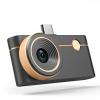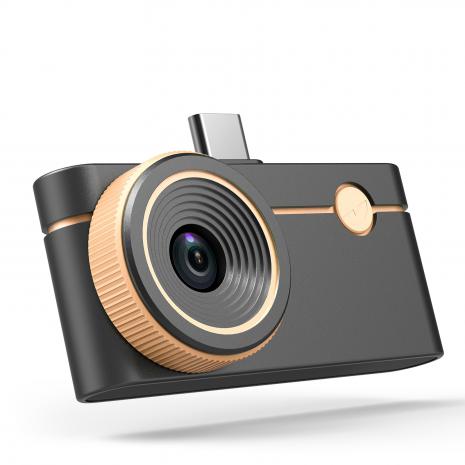
Breaking News
 Will Trump End Sham Democracy Promotions?
Will Trump End Sham Democracy Promotions?
 Review: Thumb-sized thermal camera turns your phone into a smart tool
Review: Thumb-sized thermal camera turns your phone into a smart tool
 Americans stranded in Jamaica plea for help as 'worst ever hurricane' to slam Caribbean isla
Americans stranded in Jamaica plea for help as 'worst ever hurricane' to slam Caribbean isla
 Urgent warning to Gmail users as 183 MILLION passwords are stolen in data breach...
Urgent warning to Gmail users as 183 MILLION passwords are stolen in data breach...
Top Tech News
 Graphene Dream Becomes a Reality as Miracle Material Enters Production for Better Chips, Batteries
Graphene Dream Becomes a Reality as Miracle Material Enters Production for Better Chips, Batteries
 Virtual Fencing May Allow Thousands More Cattle to Be Ranched on Land Rather Than in Barns
Virtual Fencing May Allow Thousands More Cattle to Be Ranched on Land Rather Than in Barns
 Prominent Personalities Sign Letter Seeking Ban On 'Development Of Superintelligence'
Prominent Personalities Sign Letter Seeking Ban On 'Development Of Superintelligence'
 Why 'Mirror Life' Is Causing Some Genetic Scientists To Freak Out
Why 'Mirror Life' Is Causing Some Genetic Scientists To Freak Out
 Retina e-paper promises screens 'visually indistinguishable from reality'
Retina e-paper promises screens 'visually indistinguishable from reality'
 Scientists baffled as interstellar visitor appears to reverse thrust before vanishing behind the sun
Scientists baffled as interstellar visitor appears to reverse thrust before vanishing behind the sun
 Future of Satellite of Direct to Cellphone
Future of Satellite of Direct to Cellphone
 Amazon goes nuclear with new modular reactor plant
Amazon goes nuclear with new modular reactor plant
 China Is Making 800-Mile EV Batteries. Here's Why America Can't Have Them
China Is Making 800-Mile EV Batteries. Here's Why America Can't Have Them
Review: Thumb-sized thermal camera turns your phone into a smart tool

Designed to plug directly into a smartphone or PC, the P3's aluminum alloy body is sleek and sturdy, with the design definitely reflecting Thermal Master's aim for both portability and quality. Measuring around 2.3 × 1.1 × 0.7 inches (59 × 27 × 17 mm) and weighing just over 0.9 ounces (about 26 g), it's light enough to carry around in your pocket – though it comes in a snug zip-up case to keep it a little more protected without adding too much bulk.
While this camera is designed as a tool for macro work on printed circuit boards (PCB), which I have to admit is not my area of expertise – it does what it promises, able to home in on and focus on individual chips or traces on a board. It can also handle longer distances for heating, ventilation and air-conditioning (HVAC) and building applications, though the best focus is achieved by doing close-up inspections.
The 8-mm manual focusing lens has a resolution of 256 × 192 pixels, which can be enhanced to simulate 512 × 384 pixels. However, this upscaling might come with a bit of a trade-off, depending on the device you've attached it to – potentially delivering some lag and lower frame rates (my iPhone 11 was not the best, but the P3 still coped well with my seemingly ancient Apple brick).
In terms of thermal perception, the P3 can measure temperatures of around -4 °F up to 1,112 °F (-20 °C to 600 °C) with a good margin of error of just a degree or two. This sensitivity makes it comparable to more expensive handheld imagers, but it has a lot more flexibility with app features – different color palettes, rotation, manual focus ring that's easy to adjust while using – that makes it an impressive tool in such a small package.
The accompanying app takes a little bit of experimenting with to get used to, but has a range of functions that bely the size of the hardware and ease with which it connects to a smartphone. While it works as a point-and-shoot camera, it can also measure certain points, take averages of a circle, track temperature in a line of your choosing and switch up the colors if needed (though the classic default palette is probably the best for general use).
One handy feature is its versatility. It's compatible with PCs, iPads and pretty much all iOS/Android devices, though you'll need to make sure – especially with the USB-C connection – that you don't have a bulky case that restricts any access to the connection port. I was using the lightning add-on (because of my aforementioned ancient Apple brick), which meant there was no obstruction to the port.

 China Innovates: Transforming Sand into Paper
China Innovates: Transforming Sand into Paper

